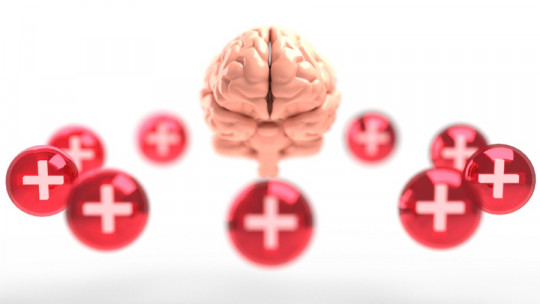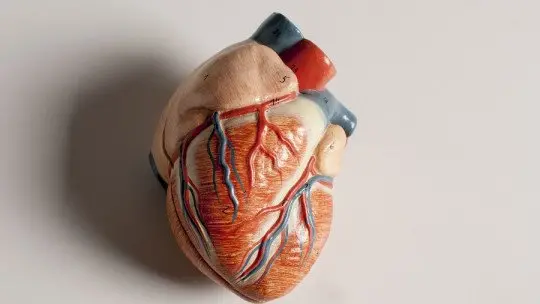The biomedical model has long been the dominant framework for understanding health and illness in the Western medical system. This model views disease as a result of biological factors—such as infections, genetics, or physical injuries—and focuses on treating these issues with medication, surgery, and other forms of medical intervention.
Although the biomedical model has significantly advanced medical science, there are some limitations to its approach, especially when it comes to addressing the broader social, psychological, and environmental factors that influence health.
In this article, we will explore the biomedical model, what it entails, and how it has shaped our understanding of health. We’ll also discuss the criticisms it faces and why a more holistic approach to healthcare is emerging.
What Is the Biomedical Model?
The biomedical model of health is a way of understanding illness primarily in terms of biological factors. It is based on the idea that diseases have specific biological causes, which can be identified and treated through scientific methods. Under this model, mental health conditions, like depression or anxiety, are often seen as biological disorders, treatable through medication or physical interventions.
The key characteristics of the biomedical model include:
- Disease is seen as a deviation from normal biological function.
- The focus is primarily on physical causes (e.g., germs, genetics, or organ dysfunction).
- Treatment is based on addressing the physical root cause, often through medications, surgery, or other medical interventions.
- It emphasizes objective, scientific measurements and diagnostic tests.
The biomedical model of health is an approach to understanding illness and disease that focuses on biological factors, excluding psychological, social, and environmental influences. According to this model, disease results from specific biological malfunctions, whether due to genetics, infections, or physical damage. Treatment, therefore, involves biological interventions, such as medication, surgery, or other medical procedures aimed at fixing the malfunction or pathology in the body.
In essence, the biomedical model views the body as a machine, with specific parts that can malfunction due to disease, trauma, or genetic predisposition. The primary goal of treatment under this model is to restore the body’s normal function by addressing the physical cause of the disease.
How the Biomedical Model Views Health
In the biomedical model, health is often defined as the absence of disease. This definition is narrow and does not take into account the psychosocial and environmental factors that can affect an individual’s well-being.
Health, from a biomedical perspective, is often understood as the proper functioning of the body’s organs and systems. For example, if the heart is functioning properly, a person is considered to be healthy—regardless of their emotional or social well-being.
Key Ideas About Health in the Biomedical Model:
Health is the absence of disease – A person is considered healthy if there are no visible signs of illness or disorder in their body.
Illness is caused by biological factors – Disease results from pathogens, genetic mutations, or organ malfunction, all of which are measurable and can be treated through interventions like medication or surgery.
Focus on physical treatments – Medical interventions in the biomedical model generally center on physical treatments, such as medications, surgeries, or therapies targeting the biological cause of the disease.
Treatment is highly specialized – The biomedical model often uses highly specialized practitioners (doctors, surgeons, etc.) who focus on particular organs or systems in the body.
Core Principles of the Biomedical Model
Several core principles govern the biomedical model, which serves as the foundation for medical practice in many countries:
1. Reductionism
The biomedical model adheres to the principle of reductionism, which suggests that complex health problems can be understood by breaking them down into simpler biological components. Rather than considering the individual as a whole, the focus is on identifying the specific biological cause of the disease and treating that cause directly.
2. Focus on Disease Pathology
The biomedical model focuses on diagnosing and treating diseases and their symptoms. Health is defined primarily by the absence of disease. This approach aims to restore the body to a state of biological normalcy, free from illness or malfunction. Consequently, this model tends to prioritize disease-specific treatment, rather than promoting general health or wellness.
3. Objectivity and Science-Based Diagnosis
In the biomedical model, health is understood as an objective reality that can be measured through scientific tests, lab results, and physical examinations. Diagnostic tools, such as blood tests, imaging scans, and biopsies, are used to objectively identify and treat diseases. Subjective factors like emotions, mental health, and social influences are typically excluded from this analysis.
4. Separation of Mind and Body
A defining feature of the biomedical model is its tendency to treat the body and mind as separate entities. The model typically focuses on biological processes and treats the mind (or mental health) as a distinct realm that is not directly influenced by the body’s physiological systems. Psychological conditions are often treated separately from physical ailments.
5. Causality in Disease
According to the biomedical model, diseases have specific biological causes, which are often the result of infections, injuries, or genetic defects. Once the disease’s cause is identified, treatment focuses on eliminating or correcting the underlying biological issue.
Historical Development of the Biomedical Model
The roots of the biomedical model can be traced back to the 19th century, particularly with the rise of germ theory. During this time, researchers like Louis Pasteur and Robert Koch revolutionized medical science by showing that many diseases were caused by microorganisms. This led to the idea that diseases could be treated by eliminating these pathogens from the body.
In the early 20th century, advancements in microbiology and the development of antibiotics and vaccines further solidified the biomedical approach. As medical science grew more sophisticated, the model continued to focus on biological solutions for health problems, primarily through medication, surgery, and diagnostic technologies.
The success of the biomedical model in treating infectious diseases like tuberculosis, pneumonia, and polio led to the widespread acceptance of this approach as the primary method of medical practice. Even as the prevalence of infectious diseases decreased, the model expanded to address other conditions, including chronic diseases and genetic disorders.
Assumptions About Health and Illness in the Biomedical Model
The biomedical model rests on several assumptions about health and illness:
1. Health as the Absence of Disease
According to the biomedical model, health is defined as the absence of disease or pathology. A person is considered healthy when they show no signs or symptoms of illness, and any deviation from this state is considered disease. This definition often excludes the psychological and social dimensions of health, focusing solely on biological well-being.
2. Causality of Disease
The biomedical model assumes that diseases are caused by identifiable biological factors, such as bacteria, viruses, or genetic mutations. These biological causes are typically isolated and treated directly to restore health. The model assumes that once the cause of disease is found, it can be corrected with the appropriate medical intervention.
3. Objectivity and Measurable Disease
The biomedical model assumes that diseases are objective, measurable phenomena. Diagnosis is based on observable symptoms and scientific tests, making it an approach rooted in empirical evidence. It often prioritizes the use of objective measurements, such as lab tests, imaging scans, and physical exams, to determine the presence of illness.
4. The Mind-Body Dichotomy
The biomedical model traditionally views the mind and body as separate entities. The biological and physiological processes of the body are treated independently from the emotional and mental aspects of a person’s health. Mental health conditions are often treated separately, focusing on biological solutions such as medication, while social and environmental factors are considered less important.
Criticism of the Biomedical Model
While the biomedical model has played a crucial role in advancing medical treatments, it has faced significant criticism. Over the years, more comprehensive models of health, such as the biopsychosocial model, have emerged to address the shortcomings of the biomedical model.
1. Exclusion of Psychological and Social Factors
One of the main criticisms of the biomedical model is its narrow focus on biological factors. The model often overlooks psychological, emotional, and social factors that contribute to a person’s overall health. Mental health disorders, for example, cannot be fully explained by biology alone. Stress, trauma, and life experiences play an equally important role in shaping a person’s health.
2. Overemphasis on Disease Treatment Rather Than Prevention
The biomedical model tends to prioritize treatment of disease rather than prevention or wellness promotion. While it excels in acute medical interventions, it does not place as much importance on promoting healthy lifestyles or addressing the root causes of health issues, such as poor diet, stress, or sedentary behavior.
3. Medicalization of Normal Life
Critics also argue that the biomedical model often leads to the medicalization of normal life experiences. For example, conditions like aging, grief, and stress are sometimes pathologized or treated as medical problems that require intervention. This approach can lead to unnecessary treatments or the stigmatization of natural human experiences.
4. Limited Scope for Chronic Illness
While the biomedical model is highly effective for treating acute illnesses, it is less successful in managing chronic conditions or those that are influenced by lifestyle factors. Diseases such as diabetes, heart disease, and chronic pain require a more holistic approach that takes into account psychological and social factors in addition to biological treatments.
5. Lack of Patient-Centered Care
Because the biomedical model focuses primarily on disease treatment, it often fails to address the individual needs and preferences of the patient. A more comprehensive approach to healthcare, such as the biopsychosocial model, incorporates the patient’s subjective experience, values, and social context into the treatment process.
The Shift Toward a Holistic Approach
As medicine advances, there is a growing recognition that health is not simply the absence of disease. The biopsychosocial model has emerged as an alternative, which expands on the biomedical model by considering biological, psychological, and social factors in understanding health and illness.
- Biomedical Model: Focuses on biological causes of disease and uses physical treatments to address them.
- Biopsychosocial Model: Considers the whole person, including mental and social factors, and aims for a more comprehensive approach to treatment.
A holistic approach to healthcare involves not only treating the symptoms of illness but also addressing underlying psychological well-being, social relationships, and lifestyle choices—factors that have a profound impact on health.
FAQs on the Biomedical Model
What is the biomedical model of health?
The biomedical model is an approach to health that focuses on the biological and physiological aspects of disease. It seeks to diagnose and treat illnesses through medical interventions such as medication, surgery, and other physical treatments.
How does the biomedical model differ from other health models?
Unlike the biopsychosocial model, which includes psychological and social factors in understanding health, the biomedical model isolates biological causes of disease and focuses on physical treatment without considering mental or social influences.
Is the biomedical model effective for all types of diseases?
The biomedical model is particularly effective for acute diseases and conditions caused by infections or injuries. However, it may not be as effective in treating chronic diseases or conditions influenced by psychosocial factors.
Does the biomedical model ignore mental health?
Yes, the biomedical model tends to exclude psychological and emotional aspects of health. Mental health disorders are often treated separately, focusing on biological causes and interventions.
Why is the biomedical model criticized?
The biomedical model is criticized for excluding psychological, social, and environmental factors, overemphasizing disease treatment over prevention, and failing to address the holistic needs of the patient, especially in cases of chronic illness or mental health.
How has the biomedical model impacted modern medicine?
The biomedical model has led to significant medical advancements, including the development of antibiotics, vaccines, and surgical procedures. It has improved the treatment of infectious diseases and increased life expectancy worldwide. However, the model’s focus on biological factors has led to a more limited approach to healthcare in general.











